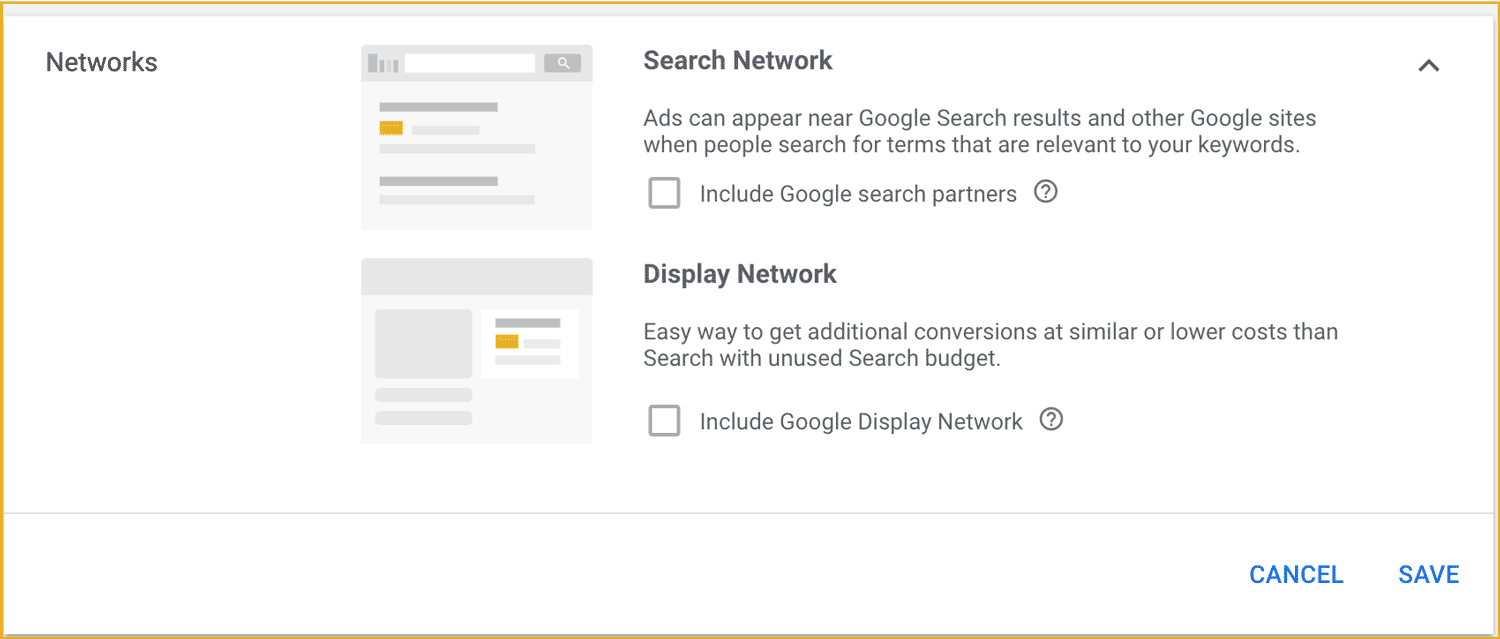
In this article, I’ll share some simple tips on how to improve your Google Ads campaign performance, lower your costs and increase your conversions. If you’re new to Google Ads there should be some easy wins for you. If you’re an advanced user and have topics you’d like to read about, drop me an email and I will try to cover them. I hope this article helps you gain more control of your PPC campaigns. Let’s start.
The default match type for all new keywords is broad. This means is that Google will show your ads when people search for terms that are loosely connected to your actual keyword. Sometimes these search terms are irrelevant for your business, but Google will still charge you. Like a lot of PPC professionals, I usually use these other match types.
*Note - Phrase match has recently been revamped and its performance still varies between industries.

Check the status of your conversions. Do numbers match the enquiries you're getting?
A PPC campaign without conversions is like a car without a destination. Conversions are your north pole when optimising your campaigns. Some conversions can be a little fiddly to set up and you might need some help configuring them correctly.
Navigate to your conversion section in Google ads and check that you are tracking actions you want your website visitors to take (form sent, purchase, phone calls). Is the tracking status “Recording Conversions”? Do the numbers look realistic? You can go into each conversion’s setup and tweak it if needed.
*Note - Make sure you are not counting multiple conversions for phone calls and forms. Most lead generation should be set to count once per session so that multiple form fills don’t skew conversion data.

In most cases, you'll want to avoid the recommended location settings and choose presence.
By default, Google Ads will show your campaigns to users who are anywhere in the world but have shown an interest in your location (are you starting to recognise a theme here?). This means that people in other countries might suddenly click on your ads for a local service. Unless you cater for an international audience who are interested in visiting your location, this setting is probably wasteful.
Navigate to your campaign setting. Under locations, you’ll see a dropdown for Location Settings. Click the link and choose the second option: “Presence: People in or regularly in your targeted locations”.
*Note - If your business is a hotel or an attraction in a tourist location then it is very likely that your ads might be relevant to people from all over the world. Otherwise, you’re better off advertising to people in your local area only.
On the topic of locations, I recommend adding several locations that overlap. I will often target the whole city, the neighbourhoods where the business is in and a couple of different radius targetings around the business. After a while, you’ll be able to see that location X is getting a better cost per conversion than location Y or that a radius of X miles around your business might be getting cheaper conversions than your whole city.
Layering your location gives you insights and control and allows you to adjust bids for the different locations layers. This gives you more options to further improve campaign performance.
Make sure your ad groups contain a limited number of keywords that focus on the same theme and will work well with the same ads. The purpose of an ad group in Google Ads is to group together keywords and ads that are relevant. Try to put yourself in the searcher’s shoes. Does your ad reflect the search they typed? Does it answer their question or need? If not then perhaps you should split the keyword into another ad group with more specific ads.

Switch off display and search partners gives you more control of your ads' destiny.
Again, Google is trying to show your ads as much as possible and gain more clicks and profit. But you’re too smart for that, right?
The default settings for new campaigns will show your search ads on both display and search partners. Without getting into too many details I recommend that you untick both these options. If you’re not sure if they’re enabled then head off to your campaign settings. You’ll find them under Networks.
Switching these options off will give you more control of your ads’ destiny. It will also make sure your ads are only displayed on Google search and not at the bottom of some obscure website that might not be right for your brand.
* Note - There is a time and a place to trial search partners but I wouldn’t recommend starting with them. Generally speaking, they give cheaper clicks, lower click-through rates and lower quality traffic.
Ad extensions make your ad bigger and better. You can add links to sections of your websites, calls-to-action, a phone number, images and a few other cool things. You’ll find the extension tab right under ads. You can create extensions at ad group, campaign or account levels depending on the level of control you want for each extension.

In this example, desktop conversions are costing 2/3 of of mobile conversions so I have increased the bid. This will show the ads for more desktop searches.
When you’re within a campaign, you can view performance on different devices. The slightly elusive devices tab is often hidden under the + More option. Google Ads don’t make it easy to control your costs. But you won’t let that stop you!
Choose a time window of at least 30 days and see which devices are bringing in the most conversions, which ones have the lowest cost-per-conversion and which ones cost you the most. The volume usually comes from mobile but sometimes the low cost-per-conversion can come from desktop. Make sure your budget is going to where it gives you the highest return.
* Note - As a rule of thumb, I don’t recommend making decisions based on one conversion. Allow at least 2-3 conversions to get some statistical significance.
I don’t want to sound negative, but negative keywords are great. What are they?
They simply block your ads from showing. Typical negative keywords can be:
I will usually add negative keywords on a weekly basis. I go over campaign search terms and if there are any irrelevant terms I will add them as negative keywords. If the term has more than one word, add them in quotation marks. This sets the match type to phrase.
*Note - Negative keywords can be added at ad group or campaign levels. They can also be added to shared lists that can then be applied to each campaign. I recommend adding the obvious pan account words to lists. This would be things like “men’s” if you sell women’s clothes. More specific keywords should go into campaigns and ad groups.
What are they? They are audiences you can show ads to, based on how they interacted with your website. Remarketing lists would typically be “All website visitors in the last 30, 60 or 90 days”.
The great thing about remarketing audiences is that they are warmer to your business. They already know your business so when they see it in an ad they feel like they’ve just come across their best friend (well, not quite as warm but you get the point).
Remarketing lists can be applied to search and display campaigns and usually get high conversion rates. If you’re not using them yet then you’re missing out. You can use them in Target setting. Meaning, the ads will only show to this audience. You can also use them in observation mode where you can adjust the bids up and down while also showing the ads to the rest of humanity.
Well done, you’ve made it so far! Improving your campaign performance means less money wasted and more actions taken on your site. I hope the tips above are useful. There are many moving parts to a PPC account and this list doesn’t cover all of them. If you have any questions or suggestions please send me an email and I’ll do my best to answer them in a future blog post.
I am a London based Google Ads consultant with years of experience. I work on a lot of lead generation PPC accounts and also some online sales. I also run a digital agency with a small but effective team, guess what we’re called? If you’d like to know more about me or Google Ads send me an email and I will be glad to help.
Odi
